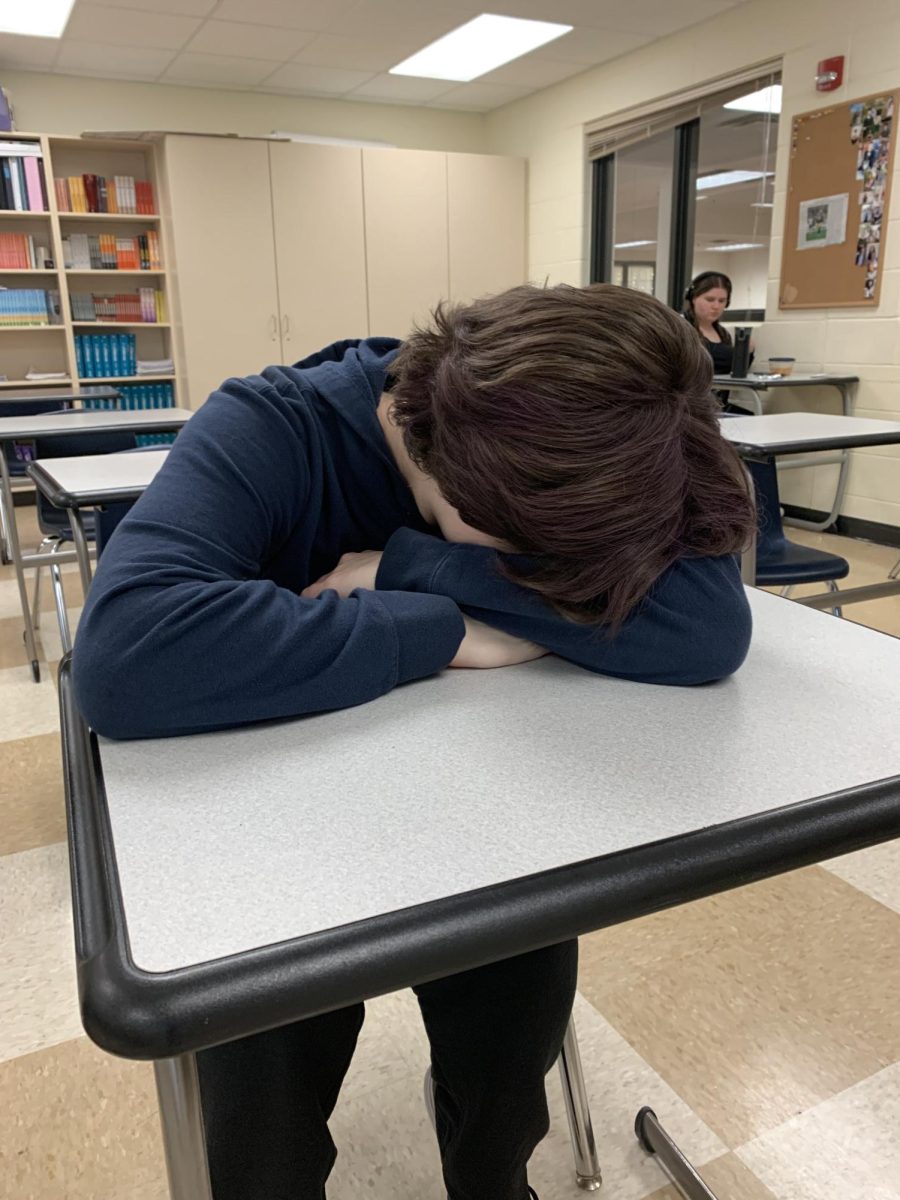Have you felt the effects of school air?
The school administration sure hasn’t.
A phenomenon brought to life by social media in recent years, school air negatively affects students’ appearances, academic performance, health, and overall well being.
According to a survey conducted by the Crimson Aviator, more than 85% of the 274 De Pere students that responded feel the impact of school air.
Generally speaking, school air is the lack of freshness and stuffiness that attributes to the school atmosphere and air quality.
The most common side effects are headaches, inability to focus, greasy skin, sickness, and a negative appearance. In that same survey, more than 150 students cited these factors as the most impactful annoyances.
DPHS freshman Zoey Barker, along with others, feels the effects of school air.
“I come to school with a clean face,” she said, “but then go home feeling musty and not feeling good.”
Additionally, junior Addi Maher explained how school air affects her personal appearance.
“It’s (school air) what makes you look ugly at the end of the day,” she said. “Like you walk into school and you’re like, oh my God, I’m ugly.”
Although it has significant impacts on the student body, few members of the DPHS staff have actually heard of “school air”.
Even DPHS principal Roger Allen said that he was unaware of its existence.
Furthermore, director of buildings and grounds Noah Wentland declined an interview about school air and said in an email that he couldn’t disclose any information due to “security reasons.”
The idea of school air may have stemmed from poor airflow, lack of natural light, and an overall negative vibe in the school.
Most DPHS teachers are aware that there is a problem with the school air circulation and quality. A couple years ago, air quality sensors were installed in rooms around the social studies/foreign language wing due to a former teacher’s complaints about air quality, but nothing unusual was found.
Teachers also struggle with drastic temperature changes within their classrooms.
Mr. Allen said about the problem, “It’s the great mystery of the building. Ideally, we have a system in place where they (teachers) can adjust the temperature of individual rooms.”
In most classrooms, teachers do not have the ability to change the temperature.
Whether or not there will ever be a solution to school air remains unknown. Solutions such as air purifiers, space heaters, and other air quality control devices have been implemented but rendered little to no change.
Although being able to open windows in classrooms would certainly be helpful for air circulation, there is no hope for that ever happening in the current DPHS building.
“At the end of the day, it looks like I got dunked in a bowl of grease,” said junior Kiera Maurer about how school air makes her look and feel.

























